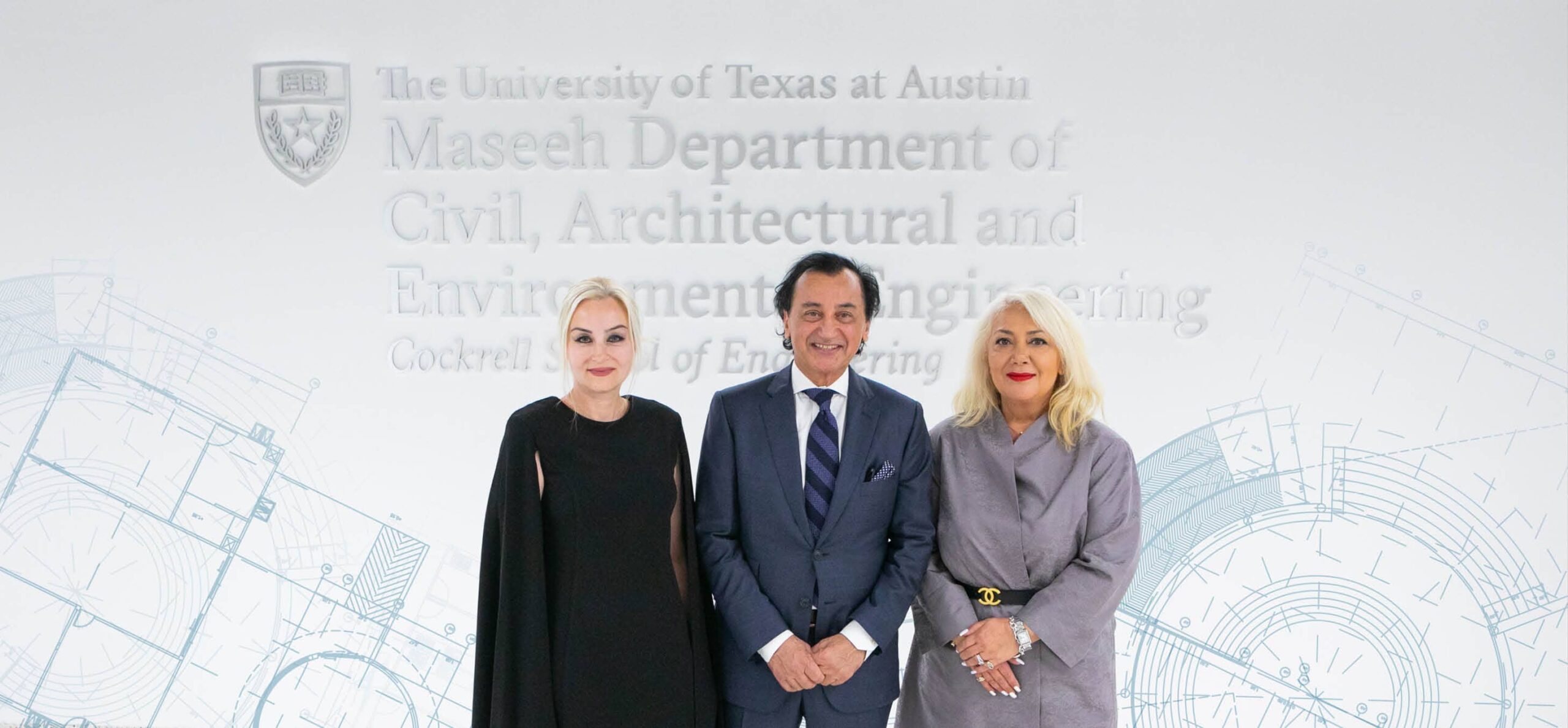Engineering the Big

Fariborz Maseeh, at center, celebrates the naming of the Maseeh Department of Civil, Architectural and Environmental Engineering with his wife, Azam Maseeh (left) and his sister, Mandana Massih (right).
Fariborz Maseeh, MS ’08, says that engineering is in an era of “tiny things.”
Some of our brightest engineering minds, including at The University of Texas at Austin, are leading rapid development in semiconducting, artificial intelligence and microprocessing — the virtually invisible designs and fabrications that underpin our world.
Maseeh is an expert in those tiny things. Last year he was elected to the National Academy of Engineering for his advancements in efficient design, public service and the development of microelectromechanical systems, the microscopic devices used in everything from cars to cell phones.
But he believes that the next era of engineering, the one that students in the Cockrell School of Engineering must be trained to lead, will address some of society’s most complex, entrenched problems in cities, water and energy, and require big-picture thinking to solve. “That’s what I call engineering of the big,” Maseeh says.
This fall, Maseeh made a transformational investment in the UT department that awarded him his own degree in civil engineering, which was renamed in his honor. The Fariborz Maseeh Department of Civil, Architectural and Environmental Engineering “really owns society’s big, macro issues,” Maseeh says.
Historically, civil, architectural and environmental engineers have designed, built and maintained public and private infrastructure. But in a time of rapidly escalating infrastructure crises, UT’s CAEE students must become society’s designers — leaders who harness advancements in technology to respond to environmental and social trends and better our communities and societies. Maseeh’s gift will support faculty and innovation in the department, including through a reshaping of the curriculum to better prepare students for the challenges ahead.
“This monumental investment will enable one of the nation’s top-ranked departments that propelled Fariborz’s success to in turn educate future leaders and pioneers who will design and shape the cities and environment of our future,” UT President Jay Hartzell says. Both the undergraduate and graduate programs in the Maseeh Department are ranked in the top 10 nationally.
Department chair Bob Gilbert agrees. “We believe we can lead the transformation to pursue innovative research and modernize our curriculum to confront the big problems of today — climate change, limited resources, outdated and crumbling infrastructure, and many more.”
Bob Gilbert, Department Chair
Changing the world
More from this series
Robotics Revolution
Visionary venture capitalist Bill Gurley — early investor in household names like Uber and Zillow — helps power a robotics revolution at UT.
The Gift of Time
Over nearly 40 years, the Terry Foundation has invested more than $100 million in scholarships for Longhorns poised to change the world.
Breaking Ground
A visionary investment from Jim and Miriam Mulva is helping to build a new tower on the Forty Acres and adding state-of-the-art new facilities to the McCombs School of Business.


